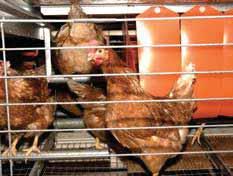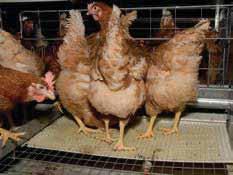
2 minute read
Differences between husbandry systems
Differences between husbandry systems
There are various types of husbandry systems irrespective of the climatic conditions. In most countries hens are kept in small cages. In countries where these are banned, mini-aviaries or enriched cage systems may be a permitted alternative. In floor housing chickens have much more room to move and are more free to exercise their natural behaviour. But in doing so they use more energy and therefore eat about 5 grams more feed a day. There is also a risk of egg loss because hens can lay their eggs outside the nest. Avoiding floor eggs requires a lot of attention and work, particularly in the early morning. In case of floor eggs start walking through the hen house at about the time they lay their eggs, disturbing the hens that try to lay their eggs outside the nests. The choice of housing systems depends not only on local cost levels but also on society’s demands in terms of animal welfare (laid down in law). And the choice must of course suit the poultry farmer and his staff.
Advertisement
Cage system Floor system

+ Most efficient method of poultry-keeping – Birds are limited in their natural behaviour (animal welfare) + Less labour-intensive + Better hygiene (diseases spread more slowly) + Climate easier to control
– When something goes wrong the consequences are more serious – Higher management level necessary: behaviour is an extra factor to take into account + Birds can display their natural behaviour + Better image (meeting demands of society) – More labour-intensive: a lot of extra work in the poultry house +/– Ventilation systems work differently in floor systems (fewer chickens so less heat generated, susceptible to weather influences, reduced pressure ventilation not possible in free-range system) Enriched caged systems also feature elements that allow birds to demonstrate limited natural behaviour, like mats for their nails or flaps that give them some privacy. Meeting the birds’ behaviour in cages copyright protected
With caged systems there are several options, from very small cages (5 hens per cage) (picture right) to cages containing 30 or more birds (picture top).

Infections spread faster in a house with non-caged chickens than in a caged system because the chickens spread the germs all over the house and come into contact with other chickens’ manure.










